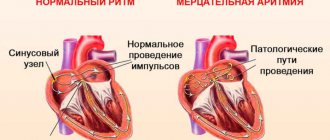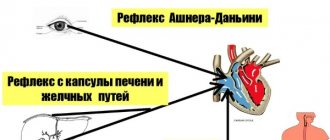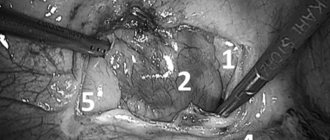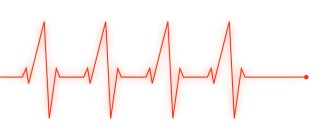What is cauterization of the heart for arrhythmia called?
Cauterization of the heart
Cardiac arrhythmia is treated with different methods. One of them is cauterization. What is cauterization of the heart for arrhythmia called? Here is the answer:
- This method is called radiofrequency ablation .
- During this procedure, an electric current is applied to the place in the heart that is causing the heart rhythm disturbance.
- For cauterization, current is applied at a certain frequency. This is where the technique got its name.
Basically, radiofrequency ablation is used in the treatment of atrial fibrillation, ventricular-type tachycardia, disorder of the myocardial conduction system and heart enlargement, when specific methods are required, and drug treatment is not effective. Cauterization is performed when contraindications for surgery are excluded.
How a laser therapy session is performed
- The doctor will ask you to sit or lie down.
- The area that will be exposed to radiation must be free of clothing.
- Laser therapy will be performed either remotely (at a distance from the skin from ½ meter to a meter) or contact (the light guide is pressed to the skin, the penetration depth of the azure waves is much greater).
- The department also practices intravascular laser therapy, in which a needle equipped with a disposable light guide is inserted into a vein. Often used for ischemic heart disease.
- There are usually no discomforts during laser procedures.
- The doctor monitors the laser radiation parameters and your condition during the session.
The specialists of the department select all radiation characteristics individually for each specific case. You will be prescribed treatment tactics, determine the localization of the effect, the number of procedures, and the duration of the session.
Laser therapy, a high-tech method of treating lesions of the heart and blood vessels, has been successfully used in our department for a long time. If you have chronic damage to the heart or blood vessels, our experts recommend laser therapy sessions once or twice a year. The therapeutic effect of the technique is extremely high.
Why is heart cauterization surgery performed for arrhythmia and tachycardia?
Cauterization of the heart during atrial fibrillation
In a healthy person, the muscles always contract at the same time, but this does not happen in a patient with atrial fibrillation. A circulation of impulses is created and a focus of excitation is formed. Why is heart cauterization surgery performed for arrhythmia and tachycardia?
- Surgery is considered necessary in most cases for atrial fibrillation.
- First, during diagnosis, the patient is diagnosed in the hospital and prescribed medication.
- If after drug treatment the dynamics do not become positive, then the person needs ablation.
- Such cauterization is necessary for people suffering from gastric tachycardia. This is the most dangerous disease because a person's heart rate accelerates and fibrillation may develop over time. This leads to the fact that the myocardium completely ceases to function.
Indications for cauterization of the heart may vary, but all examinations and prescriptions should be carried out only by a qualified cardiologist.
Contraindications to laser irradiation
The innovative laser method for treating blood vessels and the heart also has its contraindications. These include:
- Pregnancy.
- Chronic diseases of internal organs, if they are exacerbated.
- Certain blood diseases.
- Malignant neoplasms.
- Benign progressive formations.
- Active tuberculosis.
- Thrombophlebitis.
- Some blood diseases.
- Individual intolerance to light therapy.
- Anemia with a hemoglobin value less than 80 is a temporary contraindication.
Consequences of eliminating cardiac arrhythmia using cauterization
Cauterization of the heart
Elimination of cardiac arrhythmia by cauterization is an effective and efficient method. But you should follow all the doctor’s recommendations for successful recovery of the body:
- The patient must spend 24 hours in the room without getting up. Otherwise, bleeding may begin in the place where the artery was entered.
- During this time, doctors check all heart parameters and blood pressure.
- If you follow everything prescribed by the doctor after surgery, recovery will be quick.
What could be the consequences of eliminating cardiac arrhythmia using cauterization? Here is the answer:
- It is considered quite normal if, after the cauterization procedure is completed, a slight pain occurs in the chest.
- Unpleasant sensations may appear in those parts of the body where the blood vessel was penetrated.
- There is no need to be afraid of all this, because such symptoms are short-lived and they usually go away after a few minutes.
- If the pain does not subside after half an hour, you should immediately notify the doctor, who will find out the cause of the complications and help normalize the condition.
It is worth noting that ablation rarely causes any serious consequences. For 2-5 months after surgery, it is necessary to maintain proper diet, sleep, exercise, and give up bad habits.
ATRIAL FIBRILLATION
Why do you need to do RFA of atrial fibrillation?
Radicality
• RFA allows you to restore and maintain sinus rhythm with further cancellation of antiarrhythmic therapy (three months after RFA), and for people under 70 years old - stop hypocoagulation treatment)
Efficiency:
• in more than 90% of patients, sinus rhythm is restored during the first RFA procedure. • 10% of patients require re-intervention within 3-4 months after the initial RFA session. • in 65% of patients, sinus rhythm is maintained 5 years after the intervention. • the number of strokes, heart attacks and progression of CHF is significantly reduced
Safety:
• RFA is safe for patients of any age, incl. and in the age category over 65 years, including those suffering from chronic somatic pathology, CHF, who were denied treatment with RFA in other centers.
Which patients with atrial fibrillation should be referred for RFA of atrial fibrillation?
Patients with paroxysmal, persistent and chronic forms of AF, regardless of the duration of the arrhythmic syndrome, atrial size, age
Which patients with atrial fibrillation should not undergo RFA?
• Patients with blood clots in the left atrium • Patients with an unstable course of coronary artery disease • Patients with congenital and acquired heart valve defects requiring surgical correction
How to prepare patients with atrial fibrillation for RFA?
Patients with atrial fibrillation at least one month before the planned RFA surgery should be prescribed:
- anticoagulants (warfarin, Eliquis, Xarelto, Pradaxa) - antiarrhythmic drug (preferably class III drugs (most often cordarone), including for patients with a chronic variant of the arrhythmia.
How to manage patients after RFA of atrial fibrillation?
All patients continue to take antiarrhythmic drugs and anticoagulants for at least 3 months after RFA. After RFA in the acute period (first 3 months), patients may experience episodes of atrial flutter/fibrillation/atrial tachycardia. In this case, treatment should be aimed at quickly restoring sinus rhythm (prescribing additional doses of antiarrhythmic drugs and/or performing electrical cardioversion) 3 months after RFA, a decision is made on further patient management tactics (repeated RFA, withdrawal of antiarrhythmic drugs) After 6 months, a decision is made about the possibility of canceling anticoagulants
Treatment of cardiac arrhythmia - cauterization: price, cost of such an operation to restore rhythm
Any patient is concerned about the cost of this or that medical procedure. In Russia, many operations are carried out free of charge and are paid for by the state. When asked whether treatment for cardiac arrhythmia, namely cauterization, is included in the list of free services, only a doctor will answer you.
However, it is worth noting that good specialists who carry out such manipulations are located in the capital and other big cities. Treatment in this case can vary within 300,000 rubles . The price of an operation to restore rhythm in Israel or Germany can reach up to 20,000 euros . The price will include a complete diagnosis before treatment, the manipulation itself and rehabilitation.
Surgical interventions for vasoconstriction. Coronary angioplasty
Today, there are several non-invasive techniques that are effectively used to narrow blood vessels.
The most popular methods in modern endovascular (vascular) surgery include angioplasty and stenting.
Minimally invasive vascular surgery is performed through a small puncture or incision in the patient's skin. The surgeon first inserts a needle with a special core - a stylet - into the hole made, and then a catheter - a thin hollow tube. The progress of the procedure is monitored using an X-ray monitor. Moving the catheter up the bed of the vessel, it is brought to the site of narrowing of the artery, localized in advance by angiography. Depending on the specific procedure, a stent or balloon is attached to the end of the catheter.
The lumen of a healthy artery is uniformly wide and the walls are smooth. Age and atherosclerosis provoke the appearance of deposits on the walls of blood vessels, consisting of fibrous tissue, calcium and cholesterol. These are so-called atherosclerotic plaques. The more such plaques on the walls of the arteries, the more the lumen of the vessel narrows and the blood flow worsens. Eventually the narrowing reaches a critical degree and normal blood flow becomes impossible. Ischemia (insufficient blood supply) develops and, as a result, pain and even necrosis (death) of tissue.
Angioplasty (balloon) is most often used to treat diseases of peripheral vessels, and sometimes to restore the functional patency of veins. In addition, it is the only medical alternative to coronary artery bypass surgery, in particular because it does not require an incision for manipulation, is performed under local anesthesia, and the recovery period after surgery is quite short.
Stenting is used when it is necessary not only to expand the lumen of a vessel, but also to reinforce it by placing a stent - a miniature wire frame.
Indications for surgery
Traditionally, vascular surgery is indicated for all patients with moderate to severe vasoconstriction.
A significant blockage of the vessel (the tip of the catheter does not pass through the narrowing site) may be a contraindication.
Complications that occur after stenting
The possibility of complications after stenting cannot be excluded:
- bleeding at the catheter insertion point;
- formation of a channel between a vein and an artery;
- high risk of blood clots forming around the stent (in the first months after surgery);
- the occurrence of restenosis;
- blockage of the lumen of the artery below the site of narrowing;
- blood clot formation in an artery;
- renal failure;
- weakening or rupture of the vessel wall;
- allergy to contrast;
- arterial wall dissection
Coronary angioplasty surgery
Preoperative preparation for coronary angioplasty (transluminal reconstruction) consists of a complete examination of the patient, during which the following must be carried out:
- X-ray examination of the chest;
- electrocardiogram;
- laboratory tests of urine and blood;
- X-ray contrast tolerance test (if an angiographic examination of the heart vessels is prescribed before surgery)
Before surgery, it is recommended to abstain from eating. Regarding taking medications (especially antidiabetic drugs), you should consult a cardiologist.
Specifics of the procedure
A catheter is inserted through the patient's femoral artery and passed to the narrowed section of the artery for intraoperative coronary angiography, during which the location and stage of narrowing of the arterial lumen is identified.
Based on the data obtained, the cardiac surgeon selects a balloon of the appropriate size and a suitable guide catheter. In order to prevent blood clots and further thin the blood, the patient is prescribed heparin.
A guide catheter is a thin wire with a radiopaque tip that is inserted into the patient's diseased coronary artery. Having received a complete picture, the cardiac surgeon directs the guidewire to the right place.
The tip is brought out beyond the narrowing of the artery lumen.
After this, a balloon catheter is inserted through the guidewire, which delivers the balloon to the site of narrowing. Once inflated, the balloon expands the lumen of the artery, flattening the plaque. If the purpose of the operation is to place a stent, then when the balloon is inflated, it is pressed into the wall of the vessel, reinforcing the affected area and preventing it from narrowing.
Effect and rehabilitation
As a rule, as a result of a successful coronary angioplasty operation, blood flow in the coronary vessels is significantly improved and the likelihood of coronary artery bypass grafting is significantly reduced.
To minimize the manifestations of the underlying disease, you should adhere to the diet prescribed by your doctor, refrain from smoking and eliminate stressful moments.
Within six hours after a successful operation, the patient is allowed to get up and walk, but he spends the first two days in the inpatient department of the cardiac center.
The rehabilitation period lasts on average a week.
Advantages and disadvantages of cauterization of the heart for arrhythmia
Cauterization of the heart
Cauterization of the heart for arrhythmia or catheter ablation is a new procedure. That is why it is worth considering the advantages and disadvantages of its implementation for patients. The benefits are as follows:
- Cauterization of the heart is a safe procedure that does not injure muscle tissue, unlike surgery.
- Compared to drug therapy, catheter ablation provides a longer-lasting and lasting positive effect of treatment.
- Moreover, 66% of patients do not experience arrhythmic manifestations at all after cauterization and return to normal life.
- All this indicates that cardiac cauterization improves the quality of life of patients.
But like any intervention in the body, catheter ablation has its small disadvantages:
- Risk of swelling in the intervention area.
- Accumulation of red blood cells at the catheter insertion site and the risk of bacterial infection at the site.
- Damage to blood vessels and heart muscle cannot be ruled out. But these risks amount to only 1,6%.
Thus, comparing and analyzing the advantages and disadvantages of cauterization of the heart for arrhythmia, one should conclude:
- To get rid of frequent and irregular heartbeat, weakness, and inability to exercise, you should resort to cauterization of the heart.
But, as mentioned above, first the doctor carries out diagnostics, makes a diagnosis, studies concomitant diseases and contraindications in each specific case, and only after that prescribes an operation - cauterization of the heart or concludes that it is prohibited for this patient.
TYPICAL ATRIAL FLUTTER
Which patients with typical atrial flutter should be referred for RFA of typical atrial flutter?
Patients with paroxysmal, persistent and chronic forms of typical atrial flutter, regardless of the duration of the arrhythmic syndrome, atrial size, age
Which patients with typical atrial flutter should not undergo RFA?
• Patients with the presence of blood clots in the left atrium • Patients with an unstable course of coronary artery disease • Patients with an active inflammatory process in the myocardium • In the first 6 months after a stroke
How to prepare patients with typical atrial flutter for RFA?
Patients with typical atrial flutter should be prescribed at least one month before the planned RFA surgery:
- anticoagulants (warfarin, Eliquis, Xarelto, Pradaxa) must be discontinued within 5 half-lives: - all antiarrhythmic drugs
How to manage patients after RFA of atrial flutter?
All patients continue to take anticoagulants for at least 3 months after RFA.
Reviews after cauterization of the heart for arrhythmia
Cauterization of the heart
If doctors have prescribed heart cauterization surgery for you, but you cannot decide to do it, read the reviews of other people. Using a similar procedure, they successfully cured cardiac arrhythmia.
Irina, 55 years old
I would like to describe my feelings after cauterization of the heart due to arrhythmia. I read reviews from the same sufferers who describe in detail their condition during many years of arrhythmia attacks. I agree with everyone, I will not repeat myself. I can only confirm one thing - that it is very difficult to live with this. The examination before the operation also took a long time; I decided to undergo it simply with wild fear, but there was simply nothing to lose. The operation itself was somehow not memorable; everything went quickly. But when they brought me to the ward and I realized that my suffering was over, that’s when my emotions began to overwhelm me. I feel good now.
Sergey, 59 years old
After the operation I was told to lie still on my back. It’s difficult, but the next day they allowed me to get up. When I got up, the puncture site was sealed with a plaster, there were no more punctures or cuts. Before discharge, we made a control insertion of electrodes through the nose and went home. Everything has been fine for two years now, I try not to be nervous, I follow all the recommendations. The attacks did not recur.
Olga, 52 years old
I had a heart cauterization operation 1.5 years ago. I was afraid, like everyone else. But my cardiologist reassured me and said that you will be conscious. Indeed, anesthesia was given to the thigh, and there was a puncture in the same place. I felt good during the operation. After the operation, it was annoying that I had to lie still for a day. But then you can get up and walk. After discharge, the doctor recommended not to be nervous and take care of yourself. Now I go in for sports and live a normal life.
What is NLOC and how does it work?
The NLBI technique is simple and accessible. It is also characterized by non-invasiveness, sterility, painlessness, lack of damaging effects on the blood and vessel walls, and no need for disposable infusion systems or light guides.
NLBI activates the circulatory and microcirculation systems, stimulates hematopoiesis, improves the rheological properties of blood and lipid peroxidation, helps reduce cholesterol in the blood, saturates cells and tissues with oxygen, corrects immunity, has an analgesic, anti-inflammatory, and anti-edematous effect. Under the influence of laser radiation, blood viscosity decreases, bleeding and coagulation time lengthens, fibrinogen content, prothrombin index, plasma tolerance to heparin decrease, the level of endogenous heparin increases, and the fibrinolytic activity of the blood increases.
The NLBI technique is an effective means of preventing and treating a wide range of diseases. It can be prescribed as an independent method or as an addition to the main laser therapy treatment program. NLBI is performed on one pair of symmetrical veins. Preference is given to the pair located closest to the source of pathology or problem area.
The impact parameters for NLBI are as follows:
- As an independent method: frequency 5 or 50 Hz, exposure 5-10 minutes for each vein, contact technique (with slight compression), stable. 1st course of treatment: 8 sessions, 1 session per day. If necessary, the second and third courses of NLBI are carried out, the interval between courses is 1-3 months.
- As an addition to the main program: frequency 5 or 50 Hz, exposure 1-5 minutes for each vein, contact technique (with slight compression), stable. The course of treatment is 10 sessions, 1 session per day or for the entire course of the main program.
The number of sessions and courses is determined by the attending physician, based on the effectiveness of the results.










